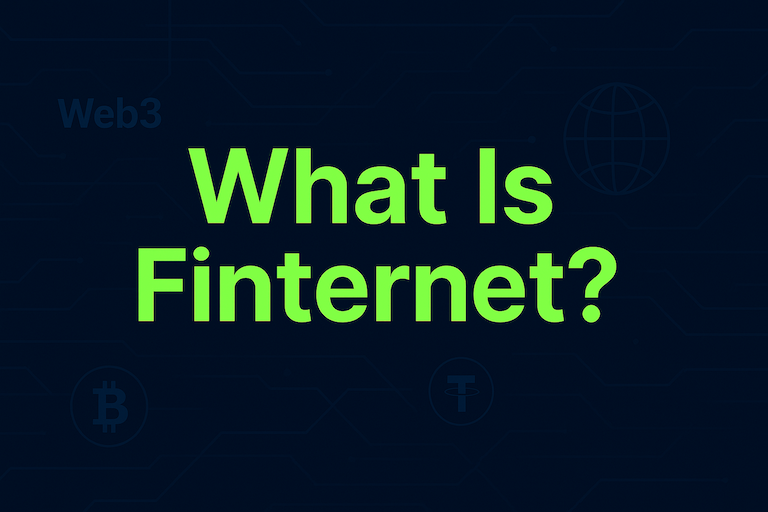What Are NFTs? A Beginner’s Guide to Non-Fungible Tokens
Jun 12, 2025
In recent years, the term 'NFT' has been making waves across the internet, from digital art auctions to video game assets and even music rights. But what exactly are NFTs, and why are they gaining so much attention? This beginner-friendly guide will break down the concept of Non-Fungible Tokens (NFTs) in a clear and simple way, helping you understand how they work, where they're used, and what makes them unique.
What Is an NFT?
An NFT, or Non-Fungible Token, is a type of digital asset that represents ownership of a unique item or piece of content on a blockchain. Unlike cryptocurrencies such as Bitcoin or Ethereum — which are fungible, meaning each unit is interchangeable — NFTs are one-of-a-kind. Each NFT has a unique identifier that distinguishes it from any other token.
The term 'non-fungible' simply means that the item cannot be replaced with something else of equal value. For example, a dollar bill is fungible because any dollar bill can be exchanged for another. But an original painting by an artist is non-fungible because it has unique characteristics that make it irreplaceable.
How Do NFTs Work?
NFTs are built using blockchain technology — a decentralized digital ledger that records transactions across many computers. Most NFTs today are created and stored on the Ethereum blockchain, although other blockchains like Solana and Flow also support them.
Here's how NFTs generally work:
A digital file (like an image, video, or audio clip) is linked to a token on the blockchain.
This token contains metadata and a unique ID that proves ownership and authenticity.
Once minted (created), the NFT can be bought, sold, or traded on various online marketplaces.
Ownership history and transaction records are publicly accessible on the blockchain.
It's important to note that owning an NFT does not necessarily give you copyright or intellectual property rights to the underlying content — only proof of ownership for the specific tokenized version.
Types of NFTs
NFTs can represent many types of digital or even physical assets. Here are some common categories:
Digital Art: One of the most popular uses; artists can sell their work directly to buyers without intermediaries.
Collectibles: Digital trading cards or virtual pets that people buy and trade.
Music & Audio: Musicians can tokenize albums or songs to sell directly to fans.
Virtual Real Estate: Parcels of land in virtual worlds like Decentraland or The Sandbox.
Gaming Items: In-game items like weapons, skins, or characters that players can truly own.
Domain Names: Blockchain-based web addresses that function similarly to traditional domain names.
Key Features and Benefits
NFTs offer several features that make them appealing in various industries:
Uniqueness: Each NFT has distinct metadata making it different from all others.
Proven Ownership: Blockchain records verify who owns what at any given time.
Interoperability: Many NFTs can be used across different platforms and applications.
Programmability: Smart contracts allow creators to earn royalties automatically when their NFTs are resold.
Transparency: All transactions are recorded on a public ledger for anyone to verify.
Use Cases and Applications
While digital art might be the most well-known use case for NFTs, their applications extend far beyond:
Art Authentication: Artists can prove originality and track future sales via smart contracts.
Event Tickets: Secure digital tickets reduce fraud and scalping.
Identity Verification: Unique tokens could represent personal credentials securely online.
Fashion & Luxury Goods: Brands use NFTs as certificates of authenticity for physical products.
Education Credentials: Diplomas or certificates issued as verifiable NFTs on the blockchain.
Getting Started With NFTs
If you're curious about exploring NFTs yourself, here’s how you can begin:
Set Up a Crypto Wallet
Choose a wallet compatible with NFT marketplaces (e.g., MetaMask).
Secure your private key and seed phrase safely offline.
Buy Cryptocurrency
Most NFT platforms require Ethereum (ETH) for purchases.
Buy ETH through a regulated exchange platform using fiat currency.
Connect Your Wallet
Link your wallet to an NFT marketplace like OpenSea or Rarible.
Browse & Buy
Explore available NFTs by category (art, music, etc.).
When you find one you like, follow prompts to purchase using your wallet balance.
Store & Manage
Your purchased NFT will appear in your wallet's collectibles section.
You can hold it as an investment or display it in virtual galleries.
Security Considerations
As with any digital asset involving real value, security is crucial when dealing with NFTs:
Always use wallets from reputable providers with strong security protocols.
Never share your private key or seed phrase with anyone — doing so could lead to loss of funds or assets.
Be cautious about phishing scams; only interact with verified platforms and websites.
Consider using hardware wallets (cold storage) for added protection if holding high-value assets long-term.
Using regulated platforms with robust compliance measures — such as licensing from financial authorities, transparent operations, and strong encryption standards — adds another layer of safety when buying or selling NFTs.
Conclusion
Non-Fungible Tokens (NFTs) offer an exciting new way to own and trade unique digital assets through blockchain technology. Whether you're an artist looking for new revenue streams or simply curious about emerging tech trends, understanding what NFTs are gives you insight into one of today's most dynamic innovations.
Now that you have a foundational understanding of what NFTs are and how they work, you're better equipped to explore their role in your digital journey. As always, ensure you're using secure tools and compliant platforms when navigating this evolving space.
Start your safe cryptocurrency journey now
Fast and secure deposits and withdrawals, OSL safeguards every transaction !


